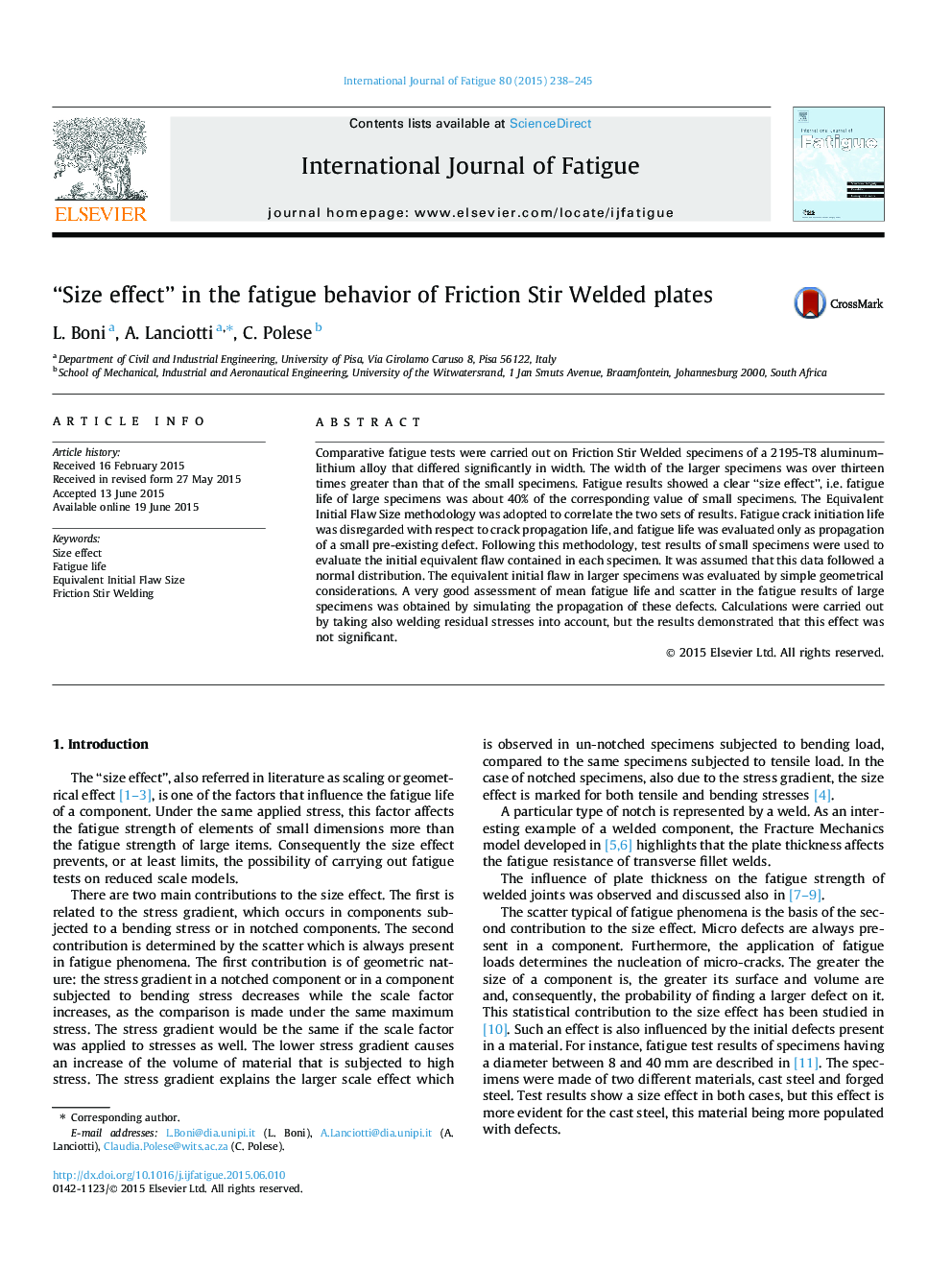| Article ID | Journal | Published Year | Pages | File Type |
|---|---|---|---|---|
| 776552 | International Journal of Fatigue | 2015 | 8 Pages |
•Proficient study on the “size effect” in fatigue characteristics of Al–Li Friction Stir Welds.•Comparative experimental assessment of fatigue life of small and large samples.•Application of the Equivalent Initial Flaw Size approach.•Effective prediction of fatigue resistance of large welded panels for aerospace applications.
Comparative fatigue tests were carried out on Friction Stir Welded specimens of a 2195-T8 aluminum–lithium alloy that differed significantly in width. The width of the larger specimens was over thirteen times greater than that of the small specimens. Fatigue results showed a clear “size effect”, i.e. fatigue life of large specimens was about 40% of the corresponding value of small specimens. The Equivalent Initial Flaw Size methodology was adopted to correlate the two sets of results. Fatigue crack initiation life was disregarded with respect to crack propagation life, and fatigue life was evaluated only as propagation of a small pre-existing defect. Following this methodology, test results of small specimens were used to evaluate the initial equivalent flaw contained in each specimen. It was assumed that this data followed a normal distribution. The equivalent initial flaw in larger specimens was evaluated by simple geometrical considerations. A very good assessment of mean fatigue life and scatter in the fatigue results of large specimens was obtained by simulating the propagation of these defects. Calculations were carried out by taking also welding residual stresses into account, but the results demonstrated that this effect was not significant.
